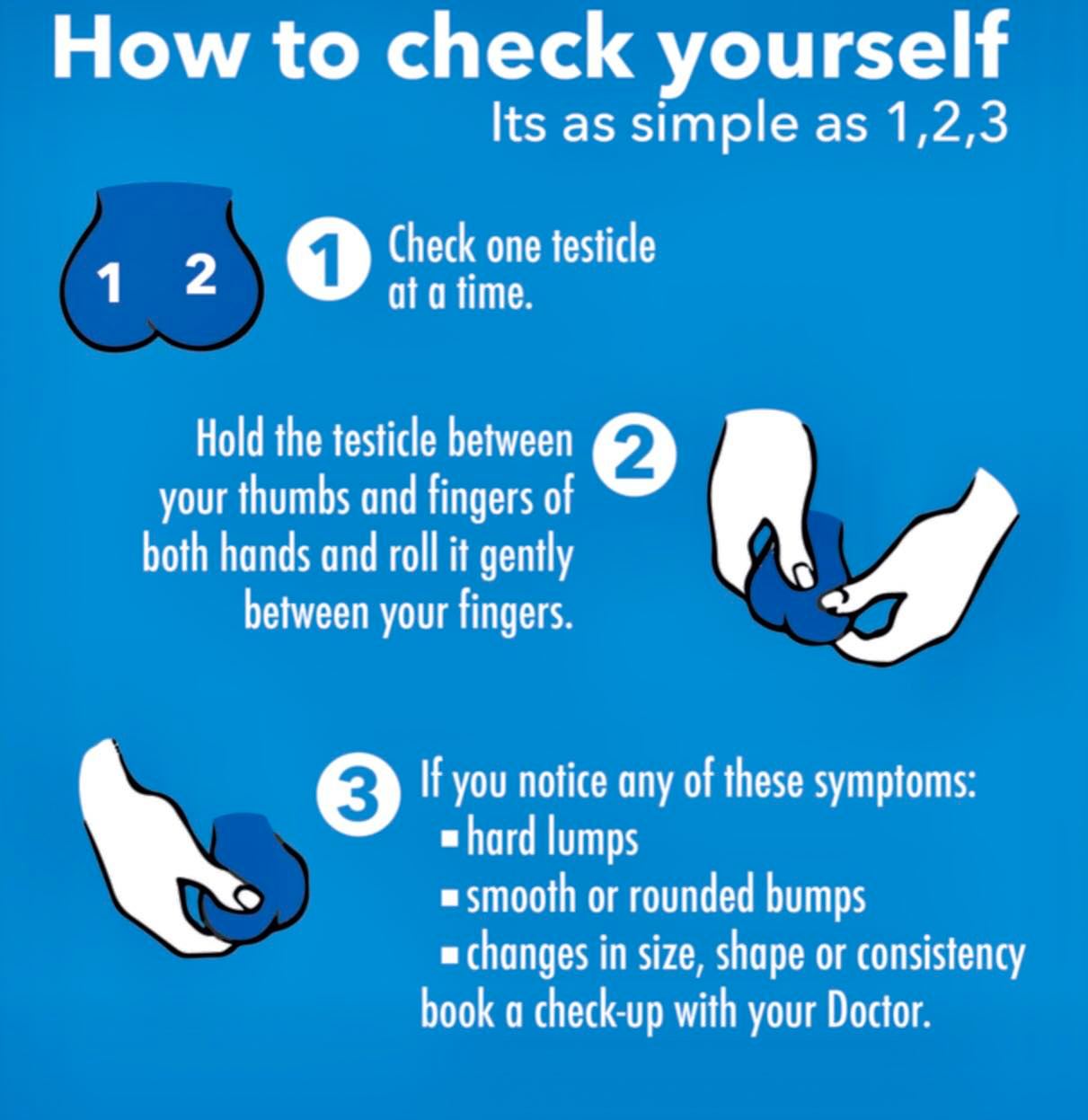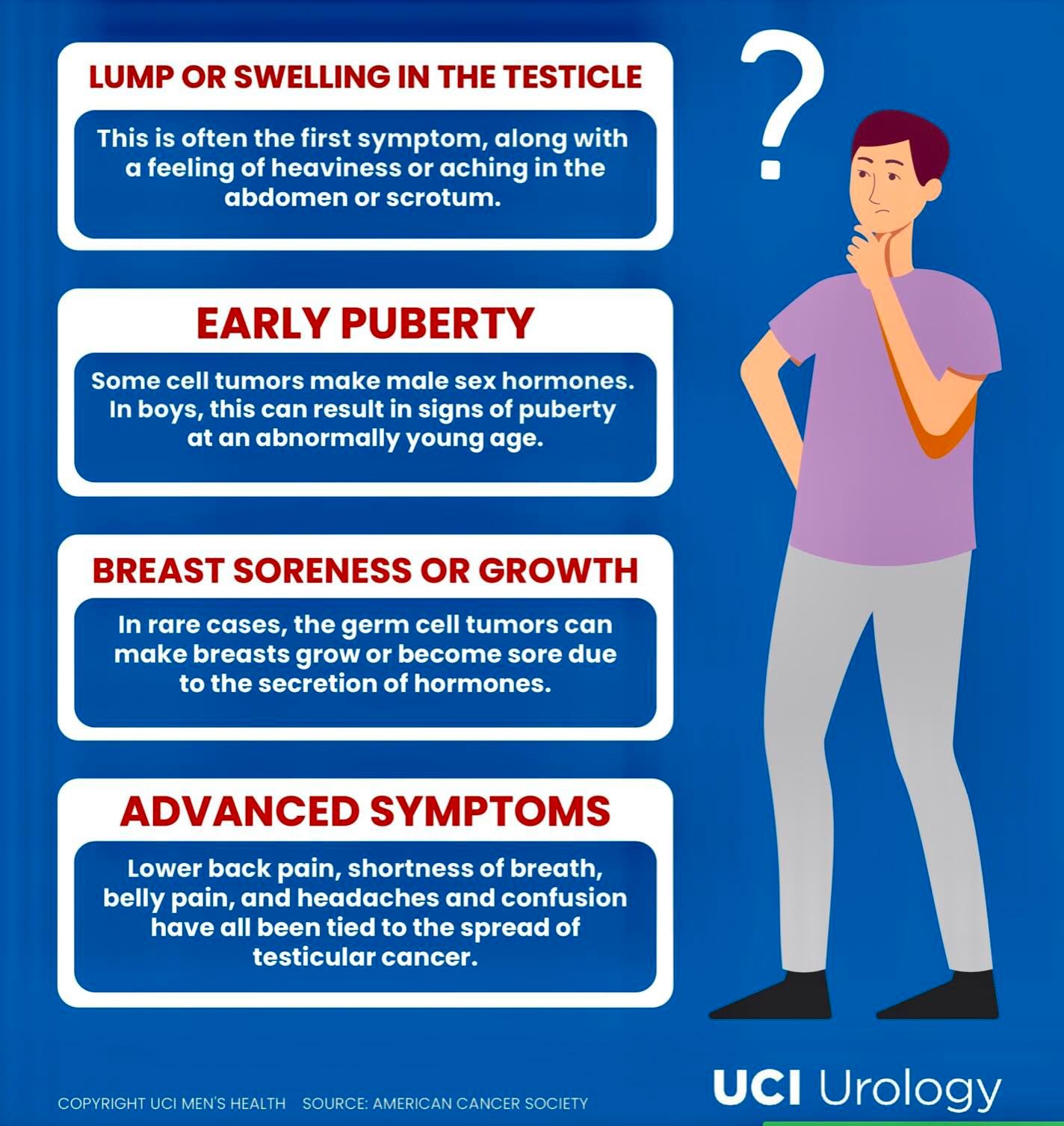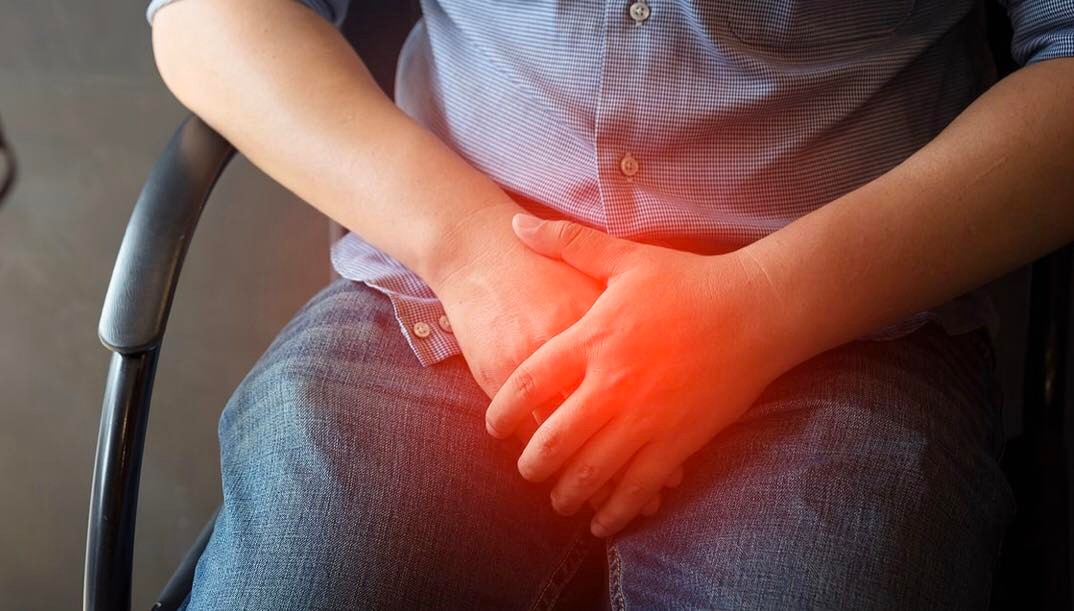Text by Henrylito D. Tacio
Photos: advancedurologuy.com, ucimenshealth.com, and chestnutappearl.org.uk
If you are 40 years old or even younger, you are most likely a candidate for testicular cancer. Although it is almost always fatal, it is curable when discovered and treated early.
Such was the case of Miguel de Leon, the son of thespians Christopher de Leon and Sandy Andolong. When he was five years old, he was operated on as he had a “testicular germ cell tumor.”
In 2014, the mother confirmed on Instagram that Miguel had been diagnosed with testicular cancer after attending her son’s first chemotherapy session. “He is still slightly sedated often which makes it hard for us to find the right timing to show him that we are beside him and to talk to him,” Andolong wrote. “But on the second day of our visit, he was a little lucid and the minute he heard my voice he reached for my hand to squeeze.”
A year later, Miguel was declared cancer-free by his doctor. “Our Miguel’s doctors just happily told him that he is cancer free,” Andolong posted on her Instagram. “By His stripes, he has been healed indeed. We would like to thank everyone who has been praying unceasingly along with our family for Miguel’s complete healing.”
Black Eyed Peas rapper Jaime “Taboo” Gomez was also diagnosed with testicular cancer. Doctors discovered it “after having some unusual back pain and unexplained exhaustion.” Because the cancer had already spread to other parts, “he had to go through surgery and chemotherapy.” Now fully recovered, he is spreading “awareness and raising funds with his music.”
But if not discovered early, the person is most likely to die from it. Among those who died of it, according to the website ranker.com, were English journalist and broadcaster Frederick Richard Dimbleby, Swedish racing driver Gunna Nilsson, US professional football player Louis Brian Piccolo, American football center Daniel Anthony Turk, Argentine soccer goalkeeper Gustavo Danie Eberto, American singer-songwriter Josh Clayton-Felt, British musician Pete King, and Canadian hockey player James Arthur Christopher Koleff.
With those deaths, the mere mention of testicular cancer is just as frightening as any other type of cancer. This type of cancer is often diagnosed among men aged 20 to 40 years old, said Dr. Juliano Panganiban in an interview on DZMM. In industrialized countries, it is reported as early as 15 years old.
Testicular cancer hits men at the worst possible time because it typically targets males earlier in life. “The majority of testicular cancers are actually painless,” says Dr. Timothy Lyon, a Mayo Clinic urologist, and oncologist. “Men should not be reassured if they’re not having pain. If something feels abnormal, it still needs to be evaluated.”
“Testicular cancer is curable,” says the US-based Cleveland Clinic. “While a cancer diagnosis is always serious, the good news about testicular cancer is that it is treated successfully in 95% of cases. If treated early, the cure rate rises to 98%.”
If not discovered and treated early, testicular cancer can be fatal. “Still, early detection makes a big difference in your prognosis,” the Cleveland Clinic says. “The earlier you see your doctor and receive a diagnosis, the greater your chances of being cancer-free.”
Those who are susceptible to testicular cancer must know the symptoms of testicular cancer. Armand, a 29-year-old executive, was urinating when he noticed that one of his testicles was a bit firmer and bigger than normal.
He was alarmed. So, he rang the doctors a couple of days later, and they saw him the same day. They booked him in for an operation and took a biopsy. He was diagnosed with testicular cancer.
Some people show no symptoms when receiving the diagnosis of testicular cancer. When symptoms do appear, they can include: a painless lump in the testicle (the most common sign), swelling of the testicle (with or without pain) or a feeling of weight in the scrotum, pain or dull ache in the testicle, scrotum or groin, and tenderness of changes in the male breast tissue.
The urologyhealth.org states: “On average, men wait for about five months before saying anything. Since the tumor can spread during that time, it is vital to reach out to a urologist if you notice any of these signs. This is especially true if a sign lasts for more than two weeks.”
The symptoms of advanced testicular cancer, according to healthline.com’s Jaime Herndon, may include: low back pain from cancer spreading to lymph nodes in the back of the abdomen, shortness of breath, chest pain, cough, belly pain, headaches, and confusion.


The testicles (also called the testes; a single testicle is called a testis) are part of the male reproductive system. These two organs are each normally somewhat smaller than a golf ball in adult males and are contained within a sac of skin called the scrotum. The scrotum hangs beneath the base of the penis; usually, the left testis hangs slightly lower than the right one.
According to The Merck Manual of Medical Information, the testes have two functions: producing sperm (the male cells needed to fertilize a female egg cell to start a pregnancy) and testosterone (the primary male sex hormone).
Testicular cancer has the same chance of incidence in either the left, right, or both testicles. But oftentimes, it occurs in just one side. Some younger men are more susceptible to testicular cancer than others.
Men with the highest risk are men with a father or brother who had testicular cancer; men with a history of testes that don’t drop before birth (also known as undescended testes); and abnormal cells in the testicle, most often found during an infertility test.
Testicular cancer may not be preventable, but it can be discovered early through testicular self-examination (TSE). “Examine your testicles once a month, after a warm bath or shower,” the Philippine Cancer Society (PCS) suggests. “The heat from the water relaxes your scrotum, making it easier for you to check for anything unusual.”
Here’s how to do BSE, as recommended by PCS:
1. Stand in front of a mirror. Look for any swelling on the skin of the scrotum.
2. Examine each testicle with both hands. Place the index and middle fingers under the testicle while placing your thumbs on the top.
3. Gently roll the testicle between the thumbs and fingers. Feel for lumps and bumps. Remember, the testicles are usually smooth, oval-shaped, and somewhat firm.
4. If you find a lump, call your doctor as soon as possible.
“See your doctor if you detect any pain, swelling or lumps in your testicles or groin area, especially if these signs and symptoms last longer than two weeks,” the PCS says. “Make an appointment with your doctor even if a lump in your testicle isn’t painful. Only a small percentage of testicular cancers are painful from the outset.”
The tests doctors use to diagnose testicular cancer may include: a physical exam (which can reveal any testicular abnormalities like lumps or swelling), an ultrasound (examine the internal structure of the testicles), and blood tests called tumor marker tests (which may show elevated levels of substances related to testicular cancer).
Herndon says testicular cancer can spread (metastasize) to other parts of the body, including the lungs, lymph nodes, liver, and brain. The two most common types of testicular cancer are seminoma tumors and non-seminoma tumors.
Seminoma tumors tend to develop more slowly than the other type. “Seminoma tumors are usually found only in the testicles and are less likely to spread to other parts of the body,” says Herndon.
Non-seminoma tumors are more aggressive and more likely to spread relative to seminoma cancers. “Non-seminoma tumors tend to spread lymphatically, which means they can spread to the lymph nodes,” Herndon says.
There are several ways to treat testicular cancer. “The initial treatment for testicular cancer is surgical removal of the entire affected testis (radical orchiectomy). The other testis is not removed, so the man retains adequate levels of male hormones and remains fertile. Infertility sometimes occurs with testicular cancer but may subside after treatment,” says the Merck manual.
With certain types of cancers, lymph nodes in the abdomen are also removed (retroperitoneal lymph node dissection) because cancer often spreads there first. Radiation therapy may also help, especially for a seminoma.
“A combination of surgery and chemotherapy often cures testicular cancer that has spread,” says the Merck manual. “Blood levels of alpha-fetoprotein and human chorionic gonadotropin that were elevated at diagnosis decline after successful treatment.”
If levels rise after treatment, cancer may have recurred. “After surgery and any other necessary treatments are completed,” the Merck manual says, “a surgeon can replace the removed testis with an artificial one.”
According to the Merck manual, the prognosis for a man with testicular cancer depends on how much the cancer has spread.
Studies have shown the 5-year survival rate for testicular cancer that is localized, or has not spread outside of the testicles, is 99%. The 5-year survival rate for regional cancer that has spread outside the testicle to nearby lymph nodes or body parts is 96%. The 5-year survival rate for distant cancer, or cancer that has spread to the lungs, liver, or distant lymph nodes, is 73%.

